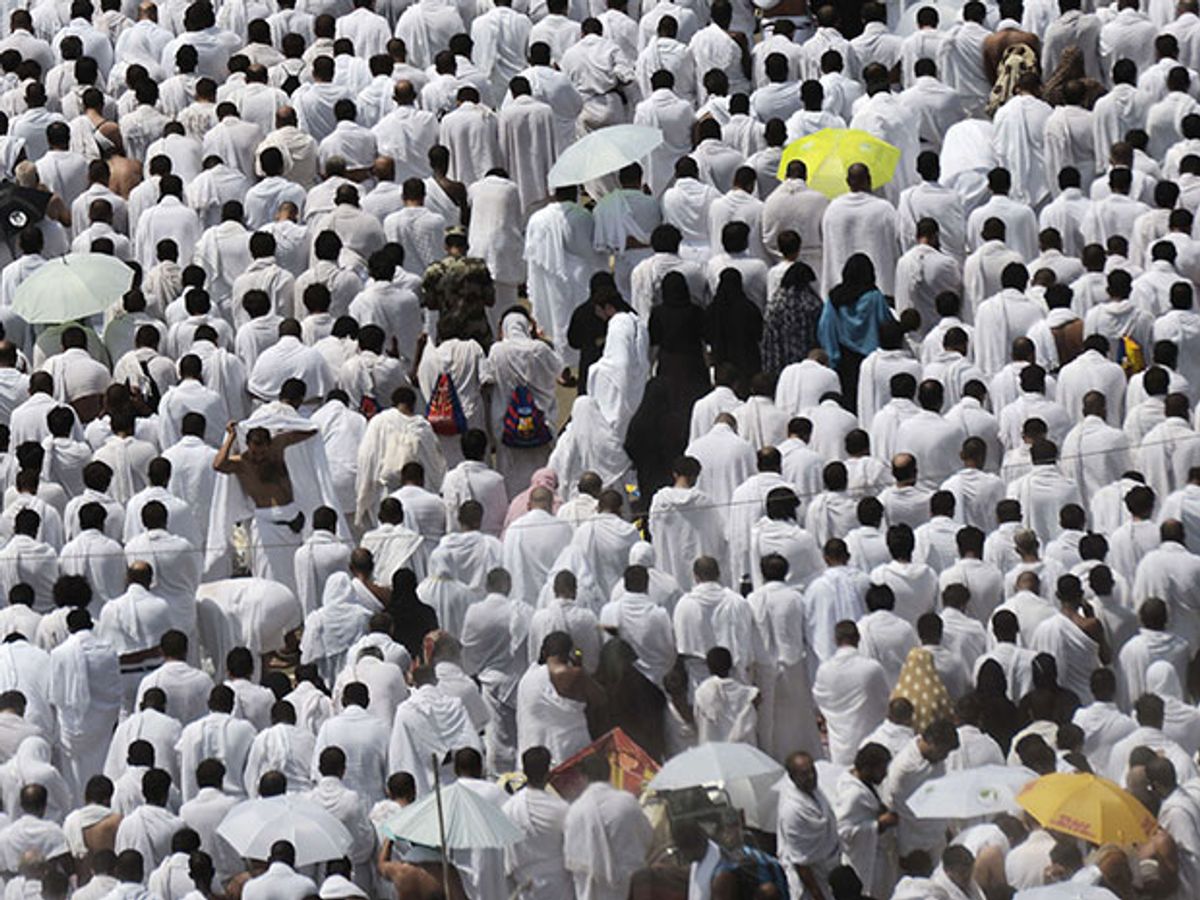A stampede that killed hundreds and perhaps thousands of Hajj pilgrims made the 2015 disaster the deadliest on record for the world’s largest Islamic gathering. Hoping to prevent another accident this September, officials plan to issue electronic bracelets to guide and keep track of the millions of pilgrims expected to visit Islam’s holy sites at Mecca in Saudi Arabia.
The Saudi Press Agency described the water-resistant bracelets as GPS-linked devices containing personal identification and medical records that Saudi officials and security forces could access via smartphone, according to BBC News. Personal information on each pilgrim would include passport numbers and addresses. In addition, Saudi officials have installed 1,000 new surveillance cameras to keep an eye on the pilgrims as they walk along pilgrimage routes and crowd inside holy sites.
Such bracelets are not just for personal identification in the event of an emergency. They are designed to also provide guidance with prayer time alerts, a guide for the pilgrimage steps, a compass to show pilgrims which direction to face when praying, and language help for non-Arabic speakers, according to Al Arabiya News. During the Hajj event, pilgrims must typically perform a series of rituals that involve circling around the Kaaba building within the Grand Mosque seven times in a counterclockwise direction.
The introduction of the electronic bracelet could go a long way toward helping officials and security forces handle the large crowds of visitors during the Hajj pilgrimage. Cenk Tunasar, a principal at the strategic innovation group of Booz Allen Hamilton, participated in an international design competition hosted by Saudi Arabia in 2010 to safely accommodate more pilgrims at Mecca’s Grand Mosque. In the wake of the 2015 disaster, he told IEEE Spectrumthat such bracelets might theoretically provide vibrating or other alert signals to tell pilgrims when it’s time to slow down and possibly prevent a crowd disaster.
But bracelets alone cannot ensure safety unless Saudi officials can also monitor the movement of crowds, watch for developing trouble spots, and intervene in a timely fashion. Tunasar previously suggested that a combination of surveillance cameras and the right software could help officials nip future crowd disasters in the bud before they spiral out of control.
(Researchers have turned to fuzzy logic systems to better understand how a crowd of people will react during a panic. See “The Fuzzy Logic of Fleeing for Your Life”.)
The death and injury tolls from the 2015 disaster remain disputed. Official Saudi Arabian figures put the deaths at 765. By comparison, independent media have generally put the number of deaths at above 2,000. In any case, Saudi Arabia came under intense pressure from countries such as Iran—which lost as many as 400 citizens during the disaster—to improve safety measures.
Jeremy Hsu has been working as a science and technology journalist in New York City since 2008. He has written on subjects as diverse as supercomputing and wearable electronics for IEEE Spectrum. When he’s not trying to wrap his head around the latest quantum computing news for Spectrum, he also contributes to a variety of publications such as Scientific American, Discover, Popular Science, and others. He is a graduate of New York University’s Science, Health & Environmental Reporting Program.



